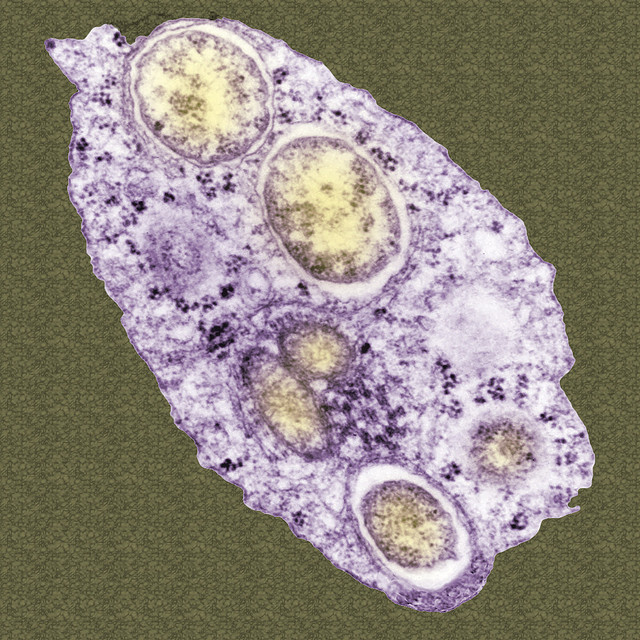Interactions
Who does this parasite interact with? Let's find out!
 The parasite Onchocerca volvulus does not have a
large interaction with many species. The blackfly carrying this
parasite interacts with a host in which it infects. This species
does not provide food for other organisms nor does it serve as a
host to other organisms. The worms share a mutualistic and
endosymbiotic relationship with the bacterium Wolbachia, which
means that the bacterium lives within the worms and both
organisms are benefiting (Tamarozzi 2011).
The parasite Onchocerca volvulus does not have a
large interaction with many species. The blackfly carrying this
parasite interacts with a host in which it infects. This species
does not provide food for other organisms nor does it serve as a
host to other organisms. The worms share a mutualistic and
endosymbiotic relationship with the bacterium Wolbachia, which
means that the bacterium lives within the worms and both
organisms are benefiting (Tamarozzi 2011).
Onchocerca volvulus has a major effect on us as humans.
This parasite causes the disease of onchocerciasis, which
infects nearly 17.7 million people around the world. This
disease does not cause death, but can severely harm an
individual. There are no positive outcomes if one is infected
with this parasite. The negative effects, on the other hand, can
range from minor inflammation to the severity of blindness. The
minor inflammation a person may receive if infected is caused by
live microfilariae. If the microfilariae are dead, it can cause
intense itching, skin discoloration, thickening and cracking of
the skin, severe dermatitis and loss of skin elasticity. An
early sign of infection are large lumps seen in the skin. What
commonly happens is the microfilariae move into the eye and when
they die it causes many of the listed symptoms, which usually
leads to blindness. This disease, which seems to affect males
more often than females, disturbs the vision of 500.000 people
and 270.000 people become blind (Dalton 2001).
causes the disease of onchocerciasis, which
infects nearly 17.7 million people around the world. This
disease does not cause death, but can severely harm an
individual. There are no positive outcomes if one is infected
with this parasite. The negative effects, on the other hand, can
range from minor inflammation to the severity of blindness. The
minor inflammation a person may receive if infected is caused by
live microfilariae. If the microfilariae are dead, it can cause
intense itching, skin discoloration, thickening and cracking of
the skin, severe dermatitis and loss of skin elasticity. An
early sign of infection are large lumps seen in the skin. What
commonly happens is the microfilariae move into the eye and when
they die it causes many of the listed symptoms, which usually
leads to blindness. This disease, which seems to affect males
more often than females, disturbs the vision of 500.000 people
and 270.000 people become blind (Dalton 2001).
The adult worms get their nutrients from feeding on blood or by
absorbing through complex cuticles. These worms are ingested
more often than preyed upon directly. Death rates for egg and
larval stages are high due to the parasite not being able to
reach a host in time. These flies breed in river environments
because of the high oxygen tension in the water (Onchocerca
volvulus: The Causative Agent 2000).
Who knew a parasite could be so interesting! Go to our Fun Facts page to learn even more!